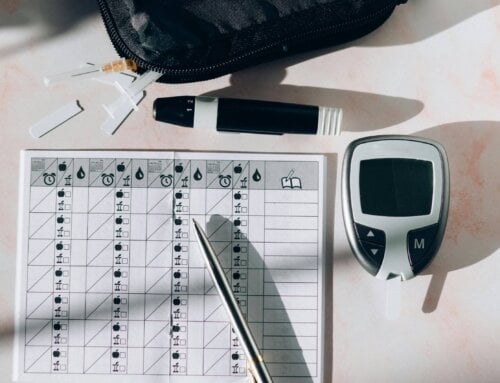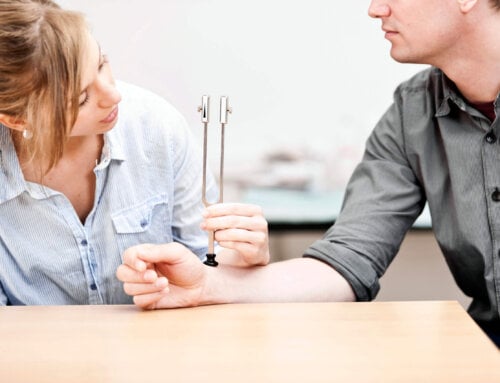As we discussed in Part 1 of Gestational diabetes, it is usually detected in the 2 nd or 3rd trimester of pregnancy. Unless you are considered high risk your physician will screen you between weeks 24-28. It may seem overwhelming at diagnosis but when you learn about what you need to do to protect yourself and your baby, you will feel much more confident and relaxed.
How are you screened for Gestational Diabetes?
Glucose Challenge Test – this test will be performed in your doctor’s office or a lab. It can be done at any time of the day without fasting. You are given a sweet liquid of 50 grams of glucose either in a cola, orange or lime flavor to drink within 5 minutes. Many women become nauseated due to the extreme sweetness of the drink. Your blood will be drawn an hour after ingestion. This test is a screening tool not a diagnostic tool. If your blood glucose level is above 130mg/dl you will require further testing. A level of 140mg/dl or higher identifies about 80% of women with gestational diabetes. Having a positive result on this test does not guarantee a diagnosis since 25% of the time it could show a false positive result. Your health care provider will make the final decision about further testing.
Glucose Tolerance Test – A second test may be required depending on your screening results. This test will give a much more definitive result. It requires you to fast 8- 12 hours prior to the test and it lasts much longer. Your blood sugar is tested fasting. Then you will drink 100 grams of a sweet glucose liquid. Your blood is drawn at 1 hour, 2 hours and again at 3 hours after drinking the liquid. The numbers in question are fasting-above 95, 1 hour-above 180, 2 hours –above 155, 3 hours above 140. If 2 readings are above 140 mg/dl you would be considered gestational and may need more testing.
Other possible Gestational Diabetes tests may include:
Ultra sounds – Used for normal pregnancies as well this is a simple non –invasive test which uses sound waves to check the growth of the baby. It can indicate if the baby is growing too large due to extra glucose crossing the placenta.
Non stress test – A monitor is placed on the mother’s abdomen to check the heart rate and activity of the baby. It can indicate a possible problem if the baby’s heart rate does not increase with movement.
Biophysical Profile (BPP) – This combines an ultra sound with a non stress test. It uses a scoring system which allows your physician to determine if the amniotic fluid is at a normal level. If it is not it could indicate the placenta [organ that delivers nutrients and oxygen to the baby] is not doing its job.
Kick counts – this is a simple test to check the time between the baby’s movements and make sure the baby remains active. Again if the baby is not getting enough oxygen it may stop movement.
Frequent check ups – Keep all your appointments suggested by your health care team especially in the last few months of your pregnancy to help your gestational diabetes stay in check.
Which supplies will you need and why?
Glucose meter, test strips, and lancets – you will be asked to use a glucose meter at home 4 times a day daily in addition to having your blood glucose levels frequently checked at your health care visits. Always bring your meter to the physician visit to compare results. The usual recommended testing times are fasting and post -meals. Physicians require testing 1or 2 hours after meals. Talk to your physician to discuss which test time they prefer. The numbers to look for are- 95 mg/dl or less for fasting or pre- meals, 130-140mg/d or lower -1 hour after meals and 120 or lower- 2 hours after a meal. Your physician will discuss the numbers they are specifically looking for to keep you and your baby healthy. Document your results in a log book or spread sheet to keep your health care provider informed. If you see abnormal results report them immediately. Be aware of hypoglycemia or low blood sugar – sweating, shaking, irritability, hunger, fast heart beat, dizziness. Always be prepared with glucose tablets and snacks. Build glucose testing into your daily routine by making it non- threatening. Keep all supplies together and away from humidity. Do not run out of supplies.Wash hands with soap and water and use different fingers. Sticking the sides of the fingers is recommended over using the finger pads where all the nerve endings are located and causes more pain. Change your lancet device after each stick for less irritation to the fingers. Dispose of lancets properly by checking with your local health department.
Checking for ketones – This is checked by using urine ketone tests strips which are dipped into the first urine of the day. Ketone production can be dangerous to pregnant women. It indicates you are not using glucose for energy from the food but are relying on burning fat instead. This is harmful and should be addressed by a dietitian who can help you make better food choices, timing and food amounts. It is always a wise idea to meet with a CDE/dietician to establish a food plan when diagnosed with gestational diabetes before any nutritional problems arise.
Blood pressure monitor – Many moms with gestational diabetes may also have blood pressure issues. Talk to your health care provider to see if you should be checking at home. Consider using a cuff as opposed to a wrist blood pressure machine for more accurate readings. Discuss which times of day you should be testing and document.
Other important information:
Doing exercise daily – discuss your situation with your health care provider. Exercise is encouraged to keep you and your baby healthy. It helps lower blood glucose levels by getting glucose into the cells where it belongs. Include 30 minutes of activity if allowed. It depends on how active you were prior to pregnancy but everyone should be able to walk unless on bed rest. Activities including walking, swimming, bicycling, gentle yoga or low impact aerobics should be included. Exercise will also help with muscle, back pain, sleeping habits and make you stronger for your actual delivery. Avoid contact sports. Try to be active most of the day but also make time for appropriate rest periods.
Healthy eating plan and timing – You are not encouraged to lose weight during pregnancy but you should be eating fresh fruits, vegetables, whole grains-fiber, and low fat dairy as well as lean proteins. Limit or exclude foods that are high in refined sugars and skip all sugary drinks. Watch sodium contents especially if your blood pressure is elevated. Try to stay hydrated with fresh water and watch caffeine intake. Talk about the need for prenatal vitamins and extra calcium. There is no specific diet for everyone so ask your dietician for your best eating strategy plan.
Meditation – All these changes to your body can cause anxiety, stress and depression. Add deep breathing, counting to ten or progressive relaxation to your day as well as socialization. All these techniques can have a positive impact on your blood sugars.
Insulin shots – If these measures do not control blood glucose levels adequately you may require insulin injections. Make sure you leave the office or pharmacy with specific instructions and a demonstration so you feel comfortable instead of stressed which can increase blood sugars. Up to 20% of women with gestational diabetes may require insulin shots during pregnancy.
Learn and Read – Keeping up with the latest information will help you feel empowered and in charge which will help regulate blood sugars. Go to support groups or lectures on the subject.
After delivery you will need your glucose level checked immediately and then again in 6-12 weeks. Your risk of type 2 diabetes goes up 50% later in life [7-10 years-most common occurrence but can happen at any time]. You should be evaluated for diabetes at least every 3 years in the future.
Continuing life style changes with exercise, a good eating plan and keeping a healthy weight is the best way to avoid diabetes and complications in the future. Be educated and prepared!












Leave A Comment